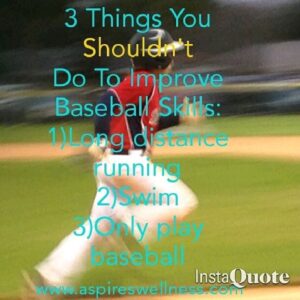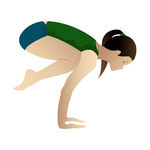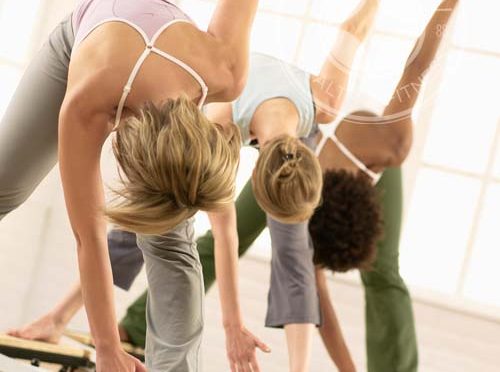I love baseball, mainly because my son plays and partly because I grew up in a household where my family loved, watched and played many sports.
Over the years, during my undergraduate, post- graduate, and continuing education studies, I learned that when training for a specific sport you have to consider the energy system you want to train and sports–specific exercises that are appropriate. This is my love and specialty and hopefully I can provide you with some insight.
Other Sports
It is my opinion that other sports will help you excel in many areas, even on the baseball field. But if you are doing certain exercises or participating in certain sports to help specifically with baseball or pitching …please note the following:
Never Do These Things if you think they are going to improve your baseball skills:
1. Long Distance Running or Endurance Events– Long Distance running is great to develop endurance ,not only cardiovascular endurance but muscular endurance. Baseball players do not need endurance to the extent that long distance running provides and developing muscular endurance will decrease speed and velocity . Here is a study to collaborate this: From the Journal of Strength & Conditioning Research (2008 Jan;22(1):230-4. doi: 10.1519/JSC.0b013e31815fa038) “For baseball players, athletes who rely heavily on power and speed, conventional baseball conditioning involving significant amounts of cardiovascular endurance training should be altered to include more speed/power interval training.”
2. Swimming– Not only is this an endurance event but the motion will put extreme stress on your shoulder and can cause impingement. According to the the Journal of Orthopaedic & Sports Physical Therapy (1994 Dec;20(6):307-18) it concludes that the”repetitive nature of swimming can predispose the shoulder to mechanical impingement and microtrauma, which may lead to laxity, rotator cuff fatigue, and subsequent secondary impingement.” Also in Sports Health.( 2010 Nov;2(6):519-2) states “that because of the great number of stroke repetitions and force generated through the upper extremity, the shoulder is uniquely vulnerable to injury in the competitive swimmer.” Swimming is fun and the water can be used for resistance to build strength for short periods of time- just be careful of overuse injuries.
3. Only Play Baseball – Young players need to develop other skills like, agility, simply by playing…play tag, kickball or anything that helps you run and change directions quickly. National Strength and Conditioning Association exercise specialists suggest that “children between the ages of 5 and 8 should be exposed to a variety of movement patterns, which include arm and leg movements performed from a stationary position, jumping moves and exercise that promote spatial awareness. Skill mastery is enhanced between ages 9 and 13. Exercises that involve running through a maze of cones, moving in figure eight patterns and jumping and landing in a controlled manner are suitable for young teenagers, age 13 to 16.” Early specialization leads to early peaks. Players improve their sport-specific skills more rapidly than those who participate in a wide range of activities. However, those who develop deeper and broader athletic skills have a better foundation when they ultimately specialize. While those who specialized early hit a plateau, the others improve as they dedicate more time to enhancing their sport-specific skill.( Los Angeles Sports & Fitness, May 2008)
Notes
Please consult your physician before participating in exercise or sports activities. If you would like specifics on how to improve in your sport, I would love to hear from you!



You must be logged in to post a comment.